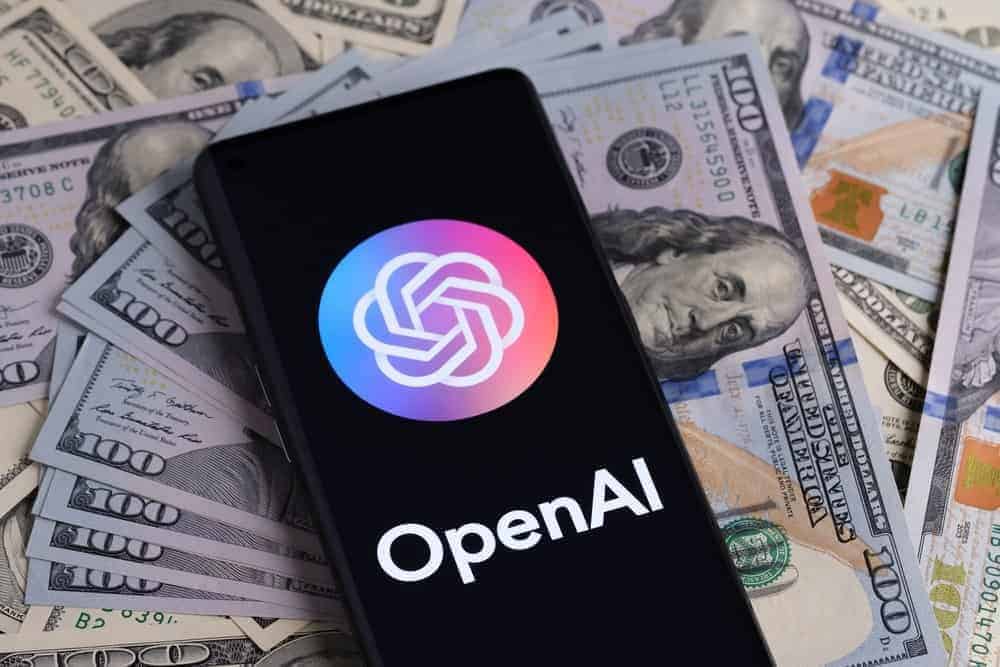Let's Master AI Together!
OpenAI Launches o1-Pro: A New Era for Complex Reasoning Models
Written by: Chris Porter / AIwithChris

Image Source: Techzine
Revolutionizing Complex Reasoning in AI
The announcement of OpenAI's o1-Pro model marks a significant leap in the world of artificial intelligence reasoning. Unlike its predecessors, the o1-Pro model has been designed explicitly to engage in more advanced reasoning tasks, making it a game changer in numerous spheres such as scientific research, coding, and intricate problem-solving. With its advanced capabilities, the o1-Pro model aims to unlock new functionalities, paving the way for AI to take on more complex and nuanced tasks.
The o1-Pro model is equipped with a staggering 200,000-token context window, enabling it to process vast data inputs seamlessly. This feature makes it particularly adept at applications that require extensive information analysis, allowing it to tackle intricate scenarios that traditional models would find challenging. Such advancements position the o1-Pro as an invaluable resource for businesses and individuals who rely on precision, such as scientists conducting research that involves sophisticated mathematical computations.
However, this groundbreaking technology comes at a hefty cost. With pricing set at $150 per million input tokens and $600 per million output tokens, the o1-Pro model is significantly more expensive than OpenAI's previous models. Its costs are double those of GPT-4.5 and a staggering tenfold when compared to the standard o1 model. Such pricing has raised eyebrows across the AI community, prompting discussions about accessibility and the potential inequalities that may arise from the exclusivity of this model.
The introduction of o1-Pro is layered with controversies as it is currently available only to select developers who have previously used OpenAI’s API. This intentional limitation raises questions about fairness in the AI industry and whether only a handful of developers will benefit from such an advanced tool for their projects, potentially widening the gap between different users and organizations.
Features and Capabilities of o1-Pro
In addition to its impressive context window, the o1-Pro model showcases several significant advancements. Among the key features is enhanced reasoning capabilities that allow the model not just to process large amounts of data but also to generate structured outputs. The incorporation of multimodal inputs, such as text and images, further enhances the model's usability, making it versatile for a range of applications.
One notable use case for the o1-Pro model lies in the development of autonomous AI agents that can perform sophisticated actions without human input. This trajectory aligns with current industry trends towards creating AI systems that can act independently, improving efficiency and automation across various sectors. From simplifying mundane tasks to addressing complex queries, the o1-Pro model is engineered to transform how we interact with AI.
As the demand for robust AI solutions grows, the introduction of the o1-Pro is timely. Businesses in industries ranging from technology to healthcare are likely to benefit from its capabilities, as the model supports more comprehensive and efficient workflows. Moreover, academic institutions could leverage this technology for extensive data analysis, enhancing research quality and yielding more profound insights.
Nevertheless, challenges remain. The high costs associated with o1-Pro may hinder widespread adoption, particularly for smaller businesses and individual developers who lack the resources to invest in such an advanced platform.
The AI Landscape: Trends and Implications of o1-Pro
The launch of OpenAI’s o1-Pro has broader implications for the evolving landscape of artificial intelligence. As models become more sophisticated, developers face the dual challenge of ensuring that these technologies remain accessible while pushing the envelope of what AI can achieve. The o1-Pro’s advanced reasoning capabilities could set new standards for capability expectations—ones that other AI developments may soon feel pressure to meet.
Moreover, the push for integrating multimodal capabilities points to an emerging trend in AI research and development. As industries increasingly require more holistic solutions, models that can process diverse forms of data—like image and text—will become vital. OpenAI’s decision to embed this feature into o1-Pro speaks volumes about the direction AI advancements are heading.
Furthermore, consider the implications for collaborative work. With its heightened ability to handle intricate tasks, the o1-Pro may transform team dynamics. Developers can assign more complex projects to AI without worrying as much about the machine's limitations. This shift encourages a more integrated partnership between humans and AI agents, allowing humans to focus on higher-level strategy and innovation while the AI manages the workload.
Alongside these advances, ethical considerations must not take a back seat. The high price and exclusive access to the o1-Pro model could create disparities in how businesses and developers leverage AI technology. This raises an important question: How can the industry ensure that advanced AI tools are accessible and equitable? Engaging in these conversations now will be critical to avoiding entrenched inequalities down the line.
Looking Ahead: The Future of AI Reasoning Models
The launch of the o1-Pro underscores a pivotal moment in the AI industry's evolution. As machines become more adept at reasoning and problem-solving, the possibilities for integration into professional workflows become extensive. Companies looking to advance their operations can harness this enhanced power to move further away from manual processes and towards automated solutions.
In anticipation of future developments, other organizations in the AI sector will likely invest in enhancing their models' reasoning capabilities and multimodal features. Competition will drive innovation, ultimately benefiting users by creating more dynamic, accessible tools. As OpenAI sets the standard with o1-Pro, we may see a surge in similar advancements that strive not just for capability but also for user-friendly applications.
To remain at the forefront of these trends, stakeholders must focus on ongoing research collaboration, ethical development, and accessible training for users. The potential for AI to improve lives, empower businesses, and foster innovation has never been higher, but it requires a thoughtful approach to harness effectively.
Conclusion: Embracing AI Advancements at AIwithChris.com
OpenAI’s introduction of the o1-Pro model is indicative of the rapid advancements occurring in the field of artificial intelligence. While the pricing may pose challenges to accessibility, the technological leap forward in reasoning capabilities and multimodal applications represents an exciting opportunity for developers and organizations alike. At a time when AI's role in society is rapidly evolving, how we engage with and develop these technologies will ultimately shape our future.
As we move forward, it's essential to keep up with these advancements to ensure that they align with ethical standards and are accessible to all. Interested in discovering more about AI and its advancing capabilities? Visit AIwithChris.com for the latest insights and trends in the AI landscape and join the conversation!
_edited.png)
🔥 Ready to dive into AI and automation? Start learning today at AIwithChris.com! 🚀Join my community for FREE and get access to exclusive AI tools and learning modules – let's unlock the power of AI together!
